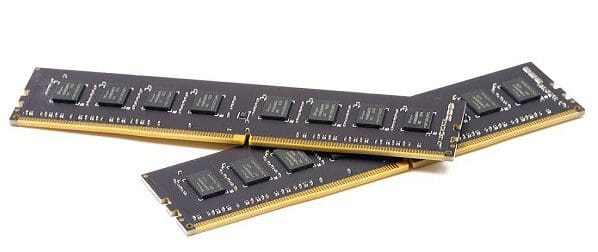Suppose youve bought or looked at computers over the last few years.
In that case, you might have noticed that the system memory has gone through generations quickly.
It wasnt that long ago that DDR3 was the standard.

Then DDR4 became the norm, and now DDR5 is being introduced.
But what is DDR memory, the differences between the different versions, and is it worth upgrading?
Contents
What is DDR Memory?
DDR superseded its predecessor, SDRAM, which was retroactively renamed SDR.
SDR stands for Single Data Rate, while DDR stands for Double Data Rate.
This acronym gives away the core advantage of DDR over SDR.
It can transmit data at twice the speed.
This alone doubles the bandwidth of DDR compared to SDR at the same clock speed.
There were other changes, including reduced voltages, increased pin count, and a slightly different physical connector.
This double pumping technique has been used in all following generations of DDR RAM.
It also means that the advertised speed is the transfer rate rather than the clock speed.
Youll find that one of the tweaks you change is the clock speed, not the transfer rate.
What Are the Differences Between DDR Versions?
DDR2 was standardized in 2003 and doubled the speed of the data bus.
The supported transfer rates were between 400MTs and 1066.66MTs.
Bandwidth started at DDRs 3200MBs and peaked at 8533.33MBs.
Technically the standard supported up to 8GB of DDDR2 per DIMM.
However, chipset support for this was low, and 2GB DIMMs were by far the most common.
DDR3 was standardized in 2007, and it again doubled the speed of the data bus.
Transfer speeds were between 800MTs and 2133.33MTs for bandwidths between 6400MBs and 17066.66MBs.
Higher capacity modules were also available, allowing for 16GB of DDR3 per DIMM.
Instead, it focused on increasing the command rate.
This means that DDR3 RAM with the same listed speed as DDR4 RAM has precisely the same performance characteristics.
Transfer speeds are between 1600MTs and 3200MTs for bandwidths between 12800MBs and 25600MBs.
Higher capacity modules were also standardized, up to 64GB per DIMM.
DDR5 is the latest DDR standard.
It was standardized in 2020.
Speeds have again been doubled, though this time by providing two narrower channels to each DIMM.
Transfer rates vary between 3200MTs and 7100MTs for bandwidths of 25600MBs to 57600MBs.
Consumer drives are still limited to 64GB per DIMM.
However, server DIMMs support up to 512GB per DIMM.
Currently, this standard is only just reaching the market, with limited availability and support.
However, that will increase in the future.
Should You Upgrade?
Upgrading depends on your situation, though you typically dont have much choice.
No DDR version has been compatible with its predecessor.
The voltages, command signals, pin counts, and DIMM keying have all been different.
Suppose you are simply considering upgrading your RAM and keeping the rest of the computer.
In that case, you will not be able to upgrade to a newer generation of RAM.
You may, however, be able to get faster versions of your currently supported DDR generation.
Suppose youre upgrading your whole computer, i.e., a new motherboard and CPU.
In that case, the new setup may require a RAM upgrade.
A motherboard will only ever support one generation of RAM.
So check which DDR generation you need.
Additionally, prices are often higher of a so-called early adopter tax.
Other Types of DDR Memory
Desktop computers take RAM in DIMMs (Dual In-line Memory Module).
Laptops typically use the small form-factor SODIMM (Small Outline Dual In-line Memory Module).
These are also able to be swapped out.
Making it impossible to upgrade them to faster speeds or higher capacities.
Conclusions
DDR memory has been the standard for computer RAM since the turn of the century.
Over five generations, it has offered increased bandwidths and capacities.
Each generation has been an immediate improvement from the previous generation.
There have been some but relatively small amounts of overlap in supported bandwidths.
However, no two generations are compatible.